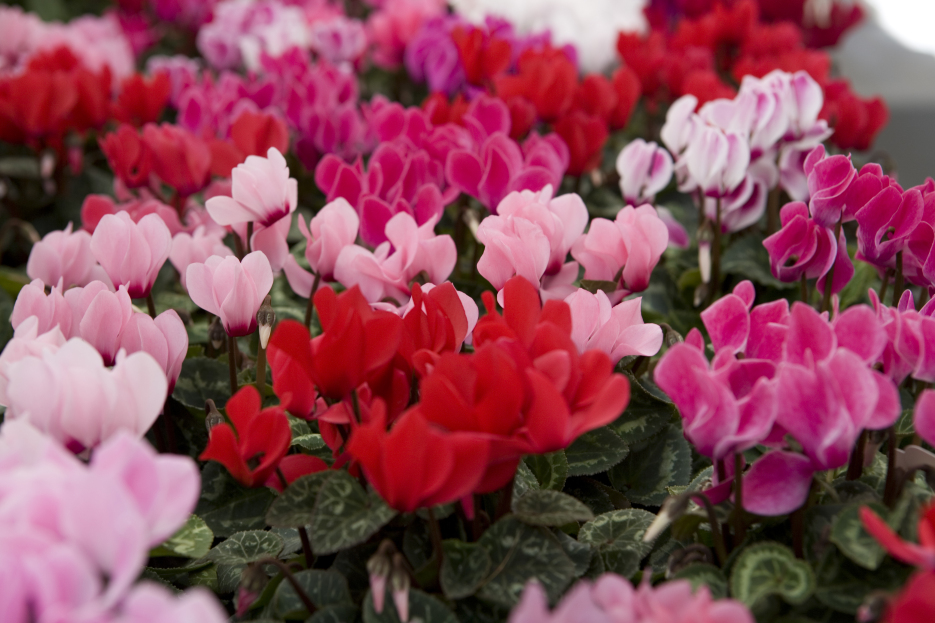
Cyclamen is a charming houseplant known for its delicate, upswept blooms and attractive, marbled foliage. Often associated with cooler months, Cyclamen is a popular choice during fall and winter, offering a burst of color when many other plants go dormant. Native to the Mediterranean, this plant has some unique care needs that differ from typical tropical houseplants. With proper attention, Cyclamen can bloom beautifully indoors and even return year after year.
Cyclamen prefers bright, indirect light. A spot near a north or east-facing window is ideal, where it can enjoy plenty of gentle light without the risk of direct sun scorching its leaves or flowers. Too little light can lead to weak growth and fewer blooms.
Watering Cyclamen correctly is key to keeping it healthy. During its active growing and blooming season (fall to spring), keep the soil evenly moist but not soggy. Always water from the bottom by placing the pot in a saucer of water for about 15 minutes, allowing the plant to soak up what it needs. Avoid watering from the top or getting the crown wet, as this can lead to rot. Once the plant enters dormancy in summer, reduce watering significantly, allowing the soil to almost dry out.
Cyclamen thrives in cooler temperatures, ideally between 50–65°F (10–18°C). Avoid placing it in warm or stuffy rooms, near heaters, or in direct sun. This plant dislikes high heat and can quickly decline if it gets too warm. Average indoor humidity is fine, but avoid misting, as moisture on the leaves and crown can cause rot.
Use a well-draining potting mix, ideally with a peat-based or African violet mix that retains moisture without becoming soggy. Ensure the pot has drainage holes to prevent water from accumulating at the bottom. Cyclamen plants grow from tubers, so it’s important not to bury them too deeply—just lightly cover the top with soil.
Feed Cyclamen with a diluted, balanced liquid fertilizer every 2–4 weeks during the active growing season (fall through spring). Stop fertilizing once the plant begins to enter dormancy and resumes when new growth appears in the fall.
Cyclamen can be propagated thru the division of tubers, This can be done by removing the plant from the growing pot, removing the soil and then dividing the tuber and then re planting it in new soil.
After blooming, Cyclamen naturally enters a dormancy period during the warmer months. The leaves will yellow and die back, and the plant will appear lifeless. This is normal. Stop watering, place the tuber in a cool, dry place, and let it rest for a couple of months. In early fall, repot the tuber into fresh soil, water lightly, and return it to bright indirect light. With patience, it will regrow and bloom again.
Cyclamen is toxic to pets, especially the tubers. If ingested, it can cause vomiting, drooling, and other serious symptoms in cats and dogs. Keep your Cyclamen plant out of reach of pets and small children.